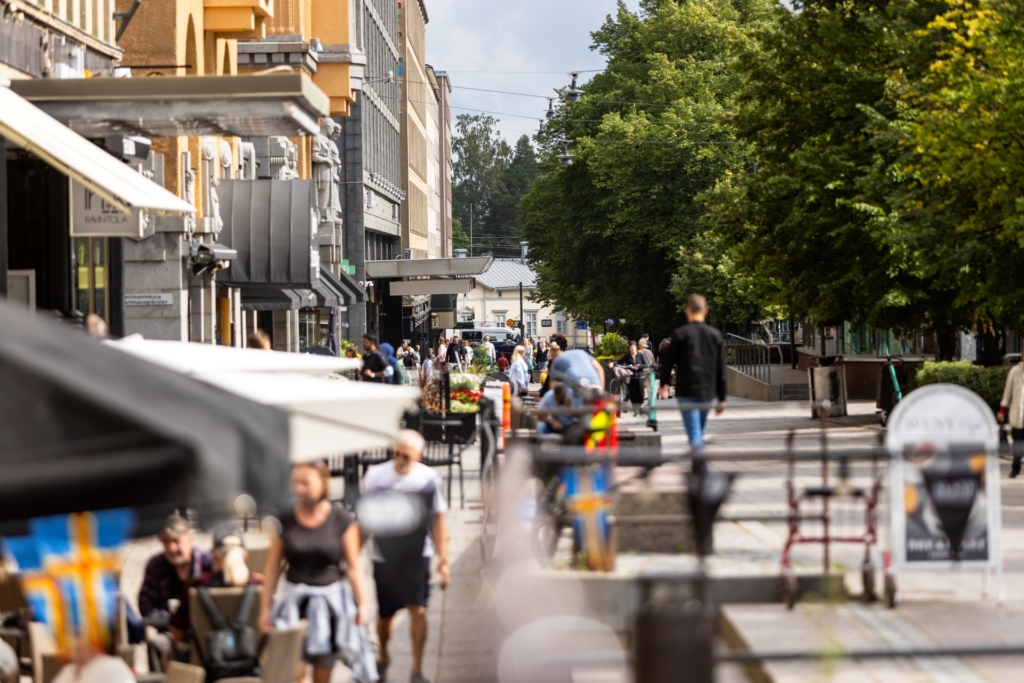
Article categories: Archive News
Vaasa’s population exceeds 70,000 residents – immigration and employment are driving the growth
Published: 7.11.2024
According to Statistics Finland’s preliminary data, Vaasa’s population has increased by 1,162 inhabitants between January and September 2024. At the end of September, Vaasa had a total of 70,118 residents.
This strong growth continues last year’s increase of 968 residents. The last time Vaasa experienced such rapid population growth was in the 1970s.
– Breaking this historical threshold serves as a positive stimulus for the development of the entire region. The figures will be finalised later this year, and we will also seek to determine when the 70,000th inhabitant moved to Vaasa, says Jonas Nylén, Housing Manager.
Immigration and employment are driving the growth
The strong growth is primarily attributed to immigration, which has been a significant source of population increase in Vaasa for several years. Of Finland’s medium-sized growing cities, Vaasa has the largest immigrant population.
The excellent employment situation in the Vaasa region is also attracting new talent from abroad, which is increasingly important for meeting the growth objectives.
– Immigration has become an increasingly significant advantage for Vaasa. It is also encouraging to see that Vaasa is attracting more and more working-age people, says Nylén.
The age structure of immigrants coming to and residing in Finland is significantly younger than that of individuals with a Finnish background. Consequently, the newcomers also provide a significant boost to the demographic structure of our country.
Demand for rental housing is at record highs
The population growth has posed challenges to the rental housing market in Vaasa. The city has virtually run out of affordable rental studio apartments, and there are also very few affordable two-room apartments available.
– Strong population growth also creates a demand for housing. We urgently need new rental housing to accommodate both students and other residents, Nylén explains.
Two ARA-funded student housing projects are in the pipeline in Vaasa; however, the production of non-subsidised rental housing is virtually non-existent due to the downturn in the housing construction sector.
– Long-term growth necessitates diversified housing production. The city’s development requires that we meet the demand for housing, particularly in the rental market, Nylén summarises.
Factors contributing to population growth in Vaasa in January-September 2024:
- Net immigration +1,267 individuals (+1,025 individuals in January-September 2023)
- Intermunicipal net migration +1 individual (+27 individuals in January-September 2023)
- Natural population change (births minus deaths) -30 individuals (-164 individuals in January-September 2023)
- Population adjustment -76 individuals (+4 individuals in January-September 2023)
- Overall change / population growth +1,162 individuals (+892 in January-September 2023)
The population change by age-groups in January-September 2024 was more balanced compared to the development in the previous year. From January to September 2024, the distribution of population growth was as follows: 15–19-year-olds accounted for 18.2%, 20–29-year-olds for 31.4%, 30–39-year-olds for 17.8%, 40–59-year-olds for 18.3%, and those aged 60 and over for 18.6% of the increase.
Population change by age group:
- 0–9-year-olds -68 people
- 10–14-year-olds +17 people
- 15–19-year-olds +212 people
- 20–24-year-olds +110 people
- 25–29-year-olds +255 people
- 30–39-year-olds +207 people
- 40–49-year-olds +188 people
- 50–59-year-olds +25 people
- 60 and over +216 people
